Inside The New York Botanical Garden
Science
Posted in Bill Buck, From the Field, Science on January 27 2011, by William R. Buck
Ed. note: NYBG scientist and Mary Flagler Cary Curator of Botany, Bill Buck is currently on expedition to the islands off Cape Horn, the southernmost point in South America, to study mosses and lichens. Follow his journeys on Plant Talk.
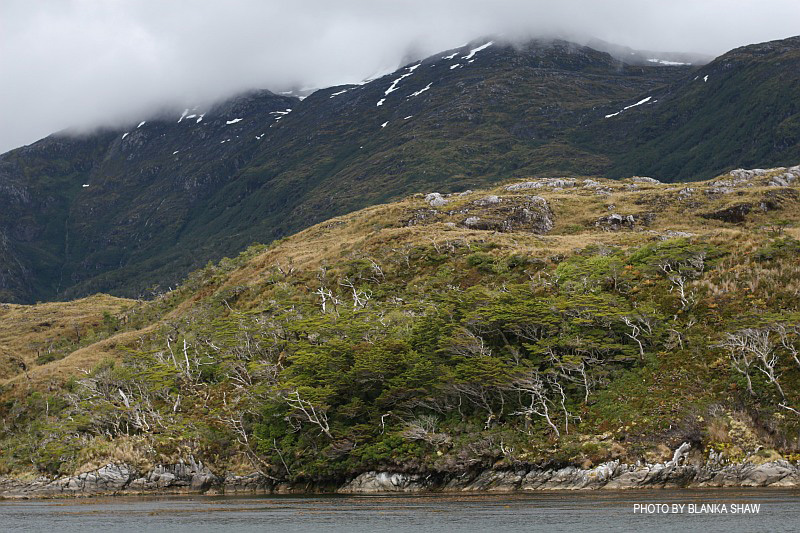 January 22, 2011, Isla Grande de la Tierra del Fuego, Seno Brujo,, Chile, 54° 30’S, 71° 32’W
January 22, 2011, Isla Grande de la Tierra del Fuego, Seno Brujo,, Chile, 54° 30’S, 71° 32’W
Yes, we’re in the same place as yesterday. The captain of our ship said that last night, winds of 80 knots (88 mph) were expected, and so he did not want to take the ship out into open water. 88 mph!! That’s hurricane force winds, and indeed during the night the winds howled and the ship was buffeted about.
I got up in the night and went out onto the deck at 3:45 a.m. The deck was illuminated with moonlight, many stars were visible, and the snow glowed on nearby mountains; however, the wind was strong and I held onto the railing to make sure I wouldn’t be blown overboard. Moments like this, alone in the glory of nature, are the moments I treasure above almost everything else. When I came out again at 6:15 a.m., the sun had risen, the winds had died down and the sky was mostly clear. If nothing else, the weather here can change quickly.
By the time we were ready to go into the field, it had started to rain again, but this time only lightly, and the winds, and thus the sea, remained calm. We headed toward what we initially thought was a lake but instead turned out to be a shallow inlet of the sea, accessible by zodiac. We split up and Jim headed toward a large, glacier-fed waterfall because of his special interest in rheophytic bryophytes, those that grow on rocks in moving water. Some rheophytes are only in the water seasonally, following rain patterns, and others are permanently wet. Juan headed up the mountain, toward the snow, because the moss genus he is working on for his dissertation often grows on exposed rocks. Blanka collected along the shore of the small inlet, and I headed for the rocky peaks near the shore and the pockets of forest in more sheltered sites.
Learn more about the team's goal for this expedition below.
Posted in Bill Buck, From the Field, Science on January 26 2011, by William R. Buck
Ed. note: NYBG scientist and Mary Flagler Cary Curator of Botany, Bill Buck is currently on expedition to the islands off Cape Horn, the southernmost point in South America, to study mosses and lichens. Follow his journeys on Plant Talk.
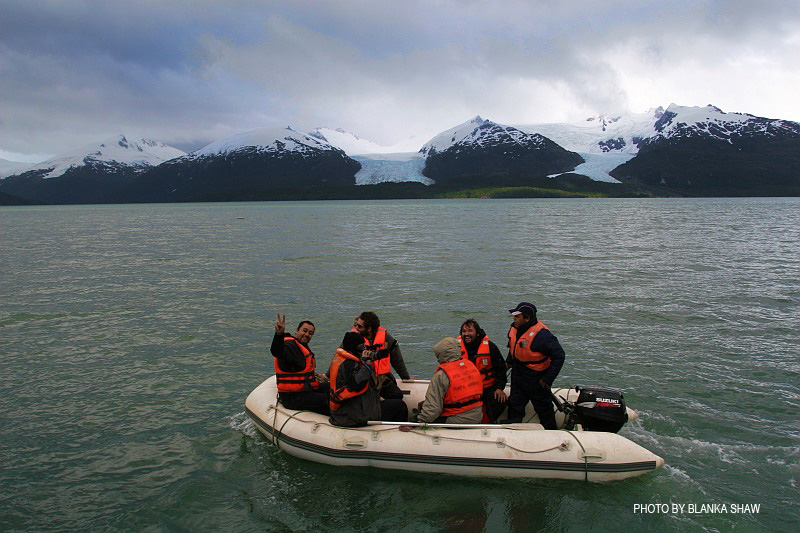 January 21, 2011, Isla Grande de la Tierra del Fuego, Seno Brujo, Chile, 54° 30’S, 71° 32’W
January 21, 2011, Isla Grande de la Tierra del Fuego, Seno Brujo, Chile, 54° 30’S, 71° 32’W
The weather caught up with us today. I’ve hardly mentioned the weather, up to this point, because it is such a part of the region that it’s easy to take it for granted. Prior to the trip I warned everyone to be prepared for temperatures around 50ºF, 40 mph winds, and rain. Until today we had been lucky. By that I mean, it has been cool, and somewhat windy, but with only occasional light rain. Here, this is considered good summer weather! Yesterday, our first full collecting day, the weather was cool and breezy with intermittent light rain. Last night when we were discussing the day among ourselves, some of our group hadn’t even noticed that it had rained at all, and it probably rained about a third of the time in the morning. But it was only a light rain and the vegetation is permanently wet, so a little more water was easy to overlook.
Early this morning we left Seno Bluff for the next sound to the west, Seno Sargazos. It was calm waters and overcast but not raining. Right after breakfast we went ashore and collected for several hours along a lake-fed river. I asked the Chileans what they would call the vegetation and was told it was called Magellanic tundra. What a good name! There were only patches of trees in small ravines, the landscape mostly consisted of tussocks of herbaceous plants and bryophytes about 2 feet tall that are very spongy underfoot, with holes between the tussocks. Walking was slow and treacherous. However, collecting was good and we found some real sub-Antarctic mosses.
During lunch we moved the ship to the next sound west, Seno Brujo. Our goal was to get to the southernmost end of it and then work up a river to a large lake we could seen on a map. I guess the rough seas between the two sounds should have been an indication that the weather was changing. When we arrived it was raining hard, but wasn’t too windy, and we decided to go collecting at least for a couple of hours. However, as we suited up in our rain gear, the weather worsened. Once we were standing out on the deck, ready to board the zodiac to go ashore, the rain became torrential and the wind picked up, driving the rain almost horizontally. When it hit your skin it felt like sleet because of the force as well as how cold it was.
The waters were rough with white tops being driven up by the wind. I made an executive decision that we would not go out in the afternoon, much to everyone’s relief. So, we’ll spend the night here tonight, in a slightly more sheltered cove, and go out in the morning. In this part of the world the weather is always a factor, but it is this very weather that results in such lush bryophytes. It is also the reason why the area is uninhabited and the landscape is so stunningly spectacular. But that can wait for morning!
Bill Buck’s Previous Reports From the Field
January 20, 2011, Isla Grande de la Tierra del Fuego, Seno Bluff, Chile
January 18, 2011, Punta Arenas, Chile
January 16, 2011, Punta Arenas, Chile
Posted in Bill Buck, From the Field, Science on January 21 2011, by William R. Buck
Ed. note: NYBG scientist and Mary Flagler Cary Curator of Botany, Bill Buck is currently on expedition to the islands off Cape Horn, the southernmost point in South America, to study mosses and lichens. Follow his journeys on Plant Talk.
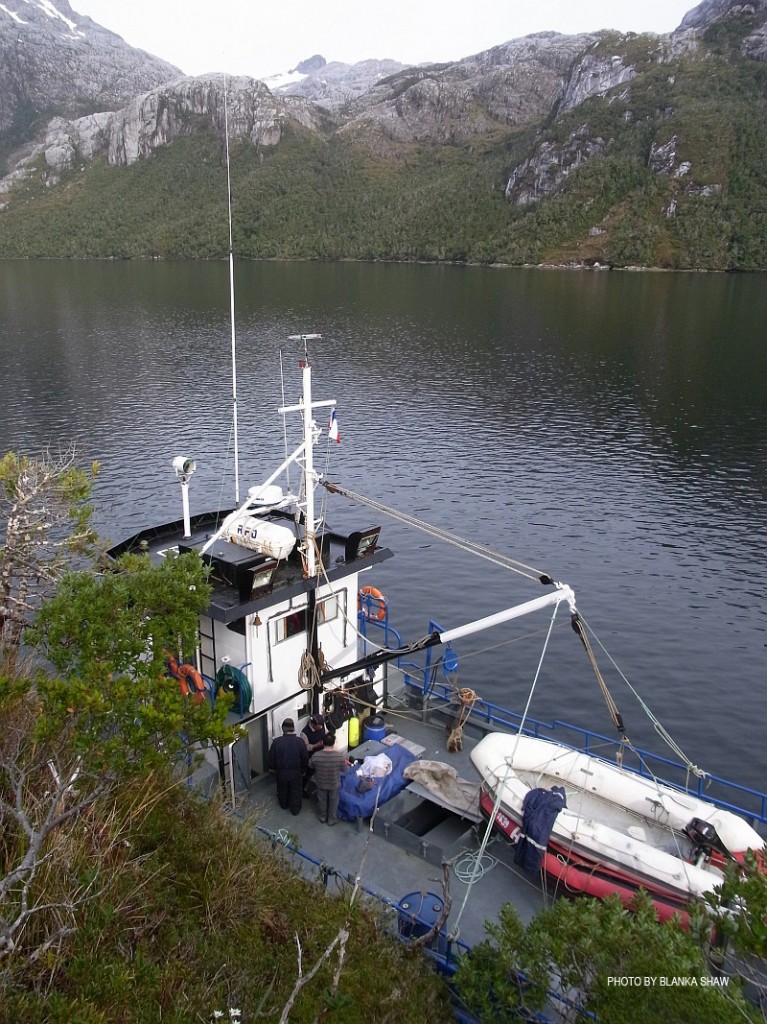 January 20, 2011, Isla Grande de la Tierra del Fuego, Seno Bluff, Chile, 54° 26’S, 71° 18’W
January 20, 2011, Isla Grande de la Tierra del Fuego, Seno Bluff, Chile, 54° 26’S, 71° 18’W
After what seemed like an eternity of waiting (but was actually only five days), we were finally ready to leave.
We transported all our gear to the port and loaded it aboard our ship, the Don Jose Pelegrin, a commercial crabbing ship. The austral summer is when crabs breed, so crab fishermen are not able to fish, and we are able to rent this ship. In winter the ship works the sub-Antarctic seas catching the Southern Hemisphere equivalent of the Alaskan king crab (think World’s Deadliest Catch).
By any standard, this is a small ship (but obviously seaworthy). It is about 55 feet long by 17 feet wide; there is a small galley and from there you can access the bridge above or the bunkroom below by ladders. The bunk room is decidedly claustrophobic since I am unable (at 6 feet) to stand up in it. The 10 bunks are arranged in the shape of a capital E (my bunk is the lower one on the lower half of the upright of the E). It is something of a contortionist act to get in and out of the bunk, and once in the bunk there is well less than a foot from your body to the bunk above. Fortunately I am not inclined to claustrophobia since my attitude is that once I close my eyes, it doesn’t matter if it is 10 feet or 1 inch from me. At my request the hold that keeps the crabs has been fitted as a moss drying room. There is a small bathroom with a toilet and sink (no bathing facilities!) but today the toilet broke and so we need to go ashore in the woods for our bodily functions.
Bill and his colleagues finally set sail! Follow their adventures below.
Posted in Bill Buck, From the Field, Science on January 18 2011, by William R. Buck
Ed. note: NYBG scientist and Mary Flagler Cary Curator of Botany, Bill Buck is currently on expedition to the islands off Cape Horn, the southernmost point in South America, to study mosses and lichens. Follow his journeys on Plant Talk.
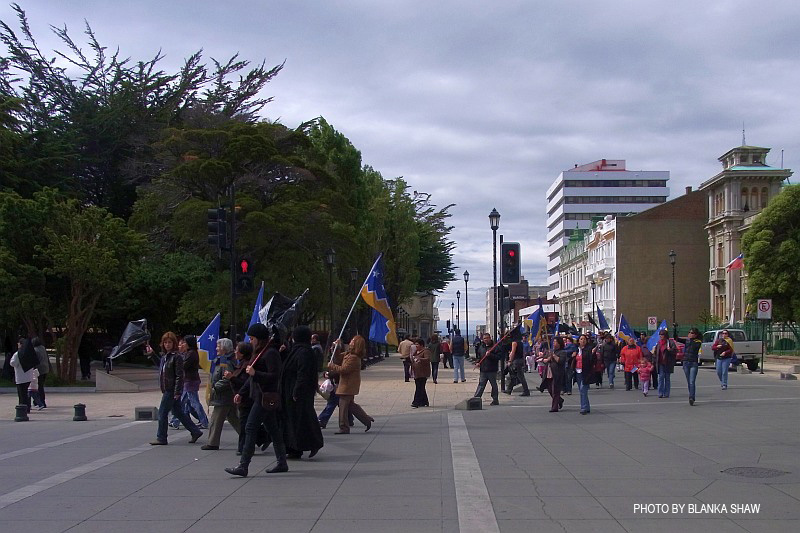 January 18, 2011, Punta Arenas, Chile
January 18, 2011, Punta Arenas, Chile
Say hallelujah! On Sunday evening the barricades were lifted temporarily and I was able to get my luggage. Ah, the joys of clean clothes! The barricades were opened at about 7 p.m. and thousands of people flocked to the airport. However, the road to the airport was only to be open until 9:30 p.m., and the road from the airport (it is a divided highway) only until 11 p.m. So, Juan and Ernesto took advantage of the window and went to the airport to get not only my luggage but also their own. They were able to get my luggage and Ernesto’s, but Juan’s was locked in the DAP Airline office and no one was there from that airline. Fortunately, Juan only had collecting equipment there, and not his clothes. So, we are able to collectively provide him with what he needs.
On Monday, the protests continued, only growing larger. However, most stores opened, so we took advantage of it and did what little shopping we needed to do. The most interesting experience was when we went to a department store to buy pillows for our bunks on the ship. I had decided bringing a pillow was too bulky and easier just to buy here. We went to the bedding department and were told they were out of pillows. However, all the beds on the floor were made and had pillows on them. I pulled a pillow out of the pillow case and said that this was just fine with me. The sales person shrugged and led me to the cash register. Both Jim and Blanka followed suit and they bagged up our pillows. When I asked how much they were, he said they were free, a “souvenir” for us! So, they were out of pillows to sell, but what pillows they did have were free. Can you see that happening at Macy’s?!
Will the protests end? Will Bill and his crew ever be able to set sail? Found out below!
Posted in Bill Buck, From the Field, Science on January 16 2011, by William R. Buck
Ed. note: NYBG scientist and Mary Flagler Cary Curator of Botany, Bill Buck is currently on expedition to the islands off Cape Horn, the southernmost point in South America, to study mosses and lichens. Follow his journeys on Plant Talk.
January 16, 2011, Punta Arenas, Chile
We were originally scheduled to set sail and head out to sea tomorrow, but I’m hoping we’ll oly be delayed by a day. Two more of our group arrived last night, Blanka Shaw from Duke University and Jim Shevock from the California Academy of Sciences. All day there had been conflicting stories in the news about whether or not the protesters (who are protesting against the government for raising fuel prices) would allow a bus to take airline passengers from the airport to the barricade nearest the city. Because of the uncertainty, Juan Larraín, a graduate student at the Universidad de Concepción (in Concepción, Chile, just south of Santiago, where the earthquake was the worst last year) and our main Chilean collaborator on the project, borrowed a bicycle from a friend and went out to meet the flight. There was a bus, but initially they would not allow Blanka on it because she was too young. Fortunately, Juan was able to get her on the bus, along with Jim, and all their luggage. We had then arranged for a local student who will be on our trip, Ernesto Davis, to be waiting with a car on the other side of the barricade. About 9:30pm they arrived at the hotel, and Juan arrived about a half an hour later by bicycle. Neither Blanka nor Jim have ever been to South America and were excited to be here. At the barricade, as they walked through with their luggage, they even stopped to collect their first moss in Chile!
Needless to say, Blanka and Jim wanted to see the town today, and so Juan and I acted as tour guides, despite the fact that we both still have blistered feet from our walk from the airport a couple of days ago. While walking around the city, we came across a demonstration march around the central square, with its statue of Ferdinand Magellan. What was so interesting is that the protesters were not just young people, as one often sees at demonstrations. Rather, whole families, from grandparents to young children, were marching with flags and banners. It was very exciting to see such multigenerational activism.
We have an unconfirmed report that tomorrow there will be a flight from Puerto Williams. A group of 30-40 biologists are trapped there because of cancelled flights. They had been there for an inauguration ceremony for a new biological station. I had initially been invited but because of limited flights to Puerto Williams (and then mostly 18-seater prop planes) and limited accommodations (one hotel and a few bed-and-breakfasts) I bowed out. However, a few friends, including Bernard Goffinet from the University of Connecticut, as well as a group of students, four of whom are scheduled to join our expedition, are now trapped there awaiting a flight out. Tomorrow we’ll see if they get off of Isla Navarino. Assuming they do, and assuming I can finally get my luggage (still at the Punta Arenas airport), we’ll depart on Tuesday, January 18, just a day late.
Just moments ago a new rumor surfaced. We heard that until midnight the road to the airport would be open, but after midnight it would be shut tight, not even allowing pedestrians to walk there. I’m sure it’s to pressure the main airline, LAN Chile, to stop flying people to the city because they would just be trapped in the airport, plus their employees couldn’t get to work. On the chance this is true, Juan and Ernesto have gone to the airport to try and get our luggage. I hope it works because I’d really like some clean clothes. Of course that would mean the Puerto Williams group are still stuck! We have even discussed renting a helicopter (around $2,000 per hour) to retrieve the luggage.
Stay tuned for future developments ….
Posted in Science on January 5 2011, by Plant Talk
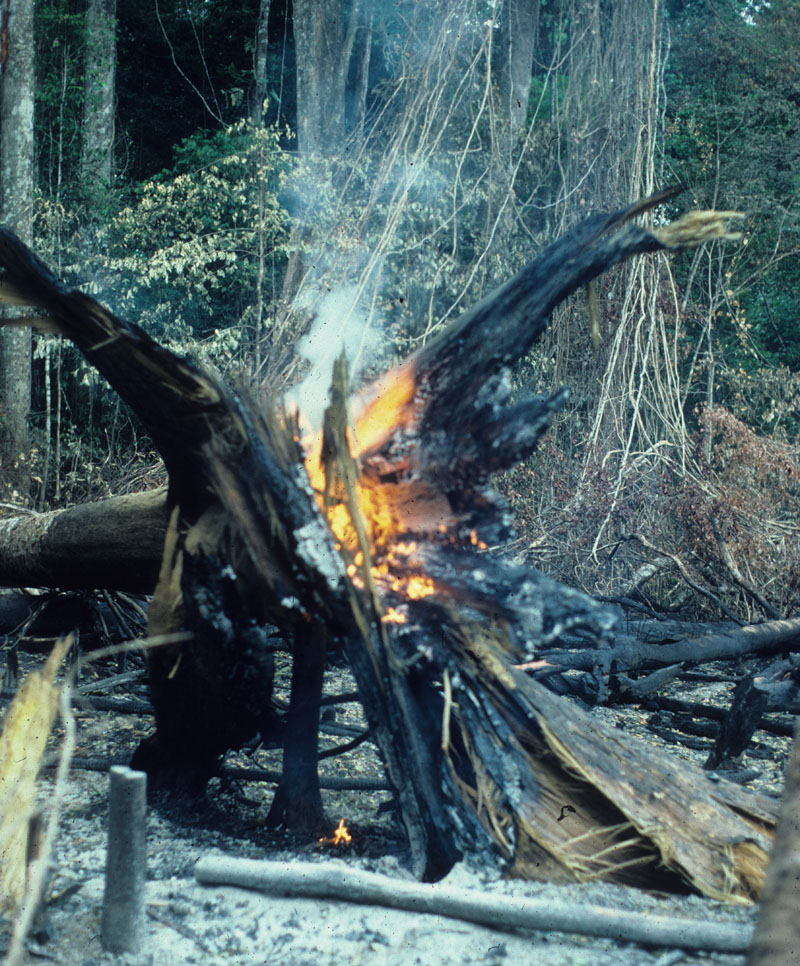 Deforestation followed by fires for creating agricultural fields and pasture releases carbon dioxide into the atmosphere at such an accelerated rate in the tropics that it is a major contributor to global warming. Photo by Scott Mori
Deforestation followed by fires for creating agricultural fields and pasture releases carbon dioxide into the atmosphere at such an accelerated rate in the tropics that it is a major contributor to global warming. Photo by Scott MoriThere are many different types of vegetation in the New World tropics. But rather than being a homogeneous whole, what grows where and when in these tropics is determined to a large extent by water availability and temperature variation. Climate change could potentially have a drastic impact on this region, especially on the rain forests. Liebig’s Law of the Minimum states that plant or animal growth is controlled by the scarcest resource in the environment; this is known as a limiting factor. For example, if a soil possesses all nutrients needed for plant growth except potassium, then the paucity of that nutrient will limit the potential growth of all plants except those that can grow in potassium-poor soils. Potassium is therefore a limiting factor for that soil.
More on the application of Liebig's Law to the destruction of Amazonian rainforests below.
Posted in Science, Video on December 1 2010, by Plant Talk
 |
Rustin Dwyer is Visual Media Production Specialist at The New York Botanical Garden. |
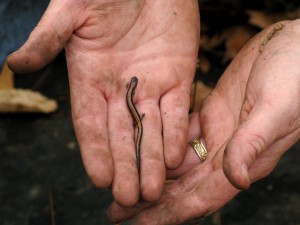 The 50-acre native forest at The New York Botanical Garden is a very special section of New York City. It’s the largest and oldest remnant of old growth forest around, and it’s right here in the Bronx! It’s almost like a time machine that gives a faint glimpse of the past. Strolling through, it’s not hard to imagine the kind of environments Henry Hudson and the Lenape people walked through. (For more on this subject check out the WLC’s Welikia project, previously known as Manhatta)
The 50-acre native forest at The New York Botanical Garden is a very special section of New York City. It’s the largest and oldest remnant of old growth forest around, and it’s right here in the Bronx! It’s almost like a time machine that gives a faint glimpse of the past. Strolling through, it’s not hard to imagine the kind of environments Henry Hudson and the Lenape people walked through. (For more on this subject check out the WLC’s Welikia project, previously known as Manhatta)
An ongoing survey at The Garden hopes to shed some light, sometimes literally, on a resident of the forest often overlooked — the tiny salamander. In particular, the terrestrial redback salamander, Plethodon cinereus. These little guys are one of the key species in the ecology of the forest. According to one of the wildlife biologists conducting the survey (Michael McGraw from Applied Ecological Services) the Redback salamander is thought to be the most abundant form of biomass in some northern deciduous forests. In a suitable area, you may be able to see one “under any rock you flip.” That’s a lot of amphibians!
The survey consists of a series of “cover boards” spread out strategically across the forest. These boards are simply rubber mats that provide a nice, cool dark place that salamanders like to congregate under (much like densely packed leaf mass). These boards are periodically checked, with biologists taking note of the number, size and significant features of any salamanders they may find. It gets a little dirty and the salamanders are tiny, quick and extremely squirmy, but the biologists and a few volunteer citizen scientists braved through to successfully gather their data during their latest visit.
Check out a video of their work featuring Forest Manager Jessica Schuler after the jump!
Read More
Posted in Around the Garden, Science on November 12 2010, by Plant Talk
 The New York Botanical Garden contains not just an amazing array of flora, it is also home to an amazing diversity of fauna. There are hawks and owls, Jose the beaver, squirrels of many colors, bunnies, tiny mice, various migrating birds, and I hear tell of a duet of turkeys (though I haven’t yet seen them for myself). But it is one of the Gardens smallest animals that was our attention a few weeks ago: salamanders.
The New York Botanical Garden contains not just an amazing array of flora, it is also home to an amazing diversity of fauna. There are hawks and owls, Jose the beaver, squirrels of many colors, bunnies, tiny mice, various migrating birds, and I hear tell of a duet of turkeys (though I haven’t yet seen them for myself). But it is one of the Gardens smallest animals that was our attention a few weeks ago: salamanders.
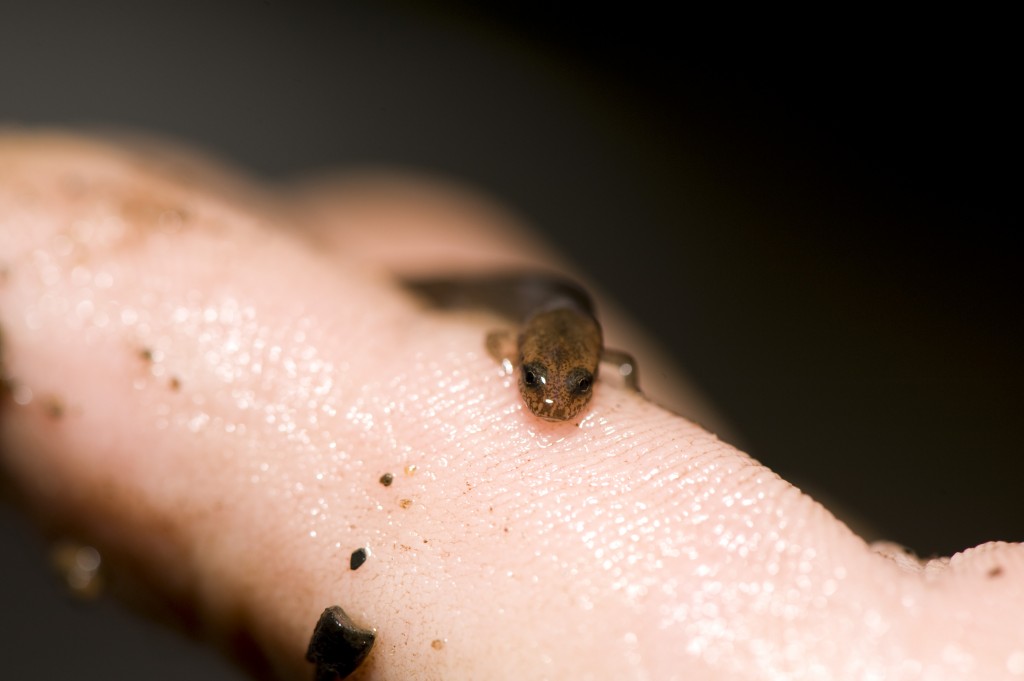
The Garden’s native Forest is home to two distinct populations of these small amphibians: Plethodon cinereus, the terrestrial Redback Salamander and Eurycea bislineata, the aquatic Northern Two-Lined Salamander.
Learn more about what salamander can teach us about the environment below.
Posted in Programs and Events, Science on October 26 2010, by Thomas Andres
| Thomas C. Andres is an Honorary Research Associate at the Garden. |
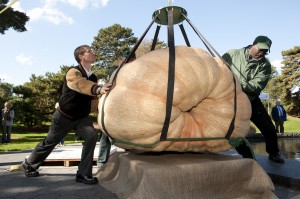
I am especially excited that three record-breaking pumpkins are on display this month at The New York Botanical Garden. The heaviest one is not only the heaviest fruit ever grown, but also the heaviest fruit in the plant kingdom! The scientific name of the species, Cucurbita maxima, says it all. How did this all come about?
First, I should explain my relationship with these plants. I work here at the Botanical Garden with Michael Nee on the taxonomy of the genus Cucurbita. This group of a little over a dozen species includes the squashes, pumpkins, and certain kinds of gourds. They all originally grew wild in the tropical and subtropical Americas. Five of the species were domesticated and represent some of our oldest New World crop plants. This means that Italy not only didn’t have tomatoes before Columbus, but no zucchini!
Wild Cucurbita fruit are like a baseball in size, shape, and even almost in hardness. This is quite large for a wild fruit, although nothing to write to the Guinness Book of World Records about. So how could a fruit that is so hard and so big travel around enough to form new populations? Wild Curcurbita do often grow in flood plains, and float during floods, but they would then only float in one direction: downstream.
A tale of megafauna, Columbus, selective breeding, and the pursuit of the one ton pumpkin. More below.
Posted in Science on August 13 2009, by Plant Talk
 |
Scott A. Mori, Ph.D., Nathaniel Lord Britton Curator of Botany, has been studying New World rain forests for The New York Botanical Garden for over 30 years. This evening from 6 to 9 p.m., as part of the Edible Evenings series of The Edible Garden, he will hold informal conversations about chocolate, Brazil nuts, and cashews—some of his research topics—during Café Scientifique. |
The Brazil nut is known to most people as the largest nut in a can of mixed party nuts, but other than that, most people know little about it, including that it comes from an Amazonian rain forest tree of the same name or that it is really a seed, not a nut.
The Brazil nut was first discovered by Alexander von Humboldt and Aime Bonpland on the Orinoco River in Venezuela and made known to the scientific world as Bertholletia excelsa in1808. The generic name honors a famous French chemist and friend of Humboldt’s and excelsa refers to the majestic growth form of the tree. Although discovered in Venezuela, this species became known as the Brazil nut because Brazil was, and still is, a major exporter of the seeds.
For the past 35 years my research has focused on the classification and ecology of species of the Brazil nut family. The Brazil nut itself is only one of what I estimate to be about 250 species of that family found in the forests of Central and South America. This number includes nearly 50 species that do not have scientific names, mostly because collectors are usually not willing to climb into tall trees to gather the specimens needed to document their existence. My research on the Brazil nut family has taken me on many expeditions to the rain forests of the New World, and what I have learned about this family of trees can be found on The Lecythidaceae Pages.
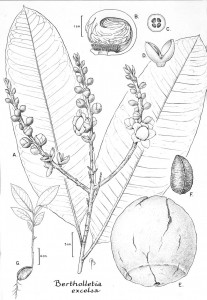 The Brazil nut flower is large, roughly two inches in diameter, and fleshy, and the male part of the flower has a structure not found in any other plant family in the world. (See illustration at right by Bobbi Angell.) The fertile stamens are arranged in a ring that surrounds the style at the summit of the ovary. This ring has a prolongation on one side that is expanded at the apex to form a hood-like structure. At the apex of the hood are appendages that turn in toward the interior of the flower.
The Brazil nut flower is large, roughly two inches in diameter, and fleshy, and the male part of the flower has a structure not found in any other plant family in the world. (See illustration at right by Bobbi Angell.) The fertile stamens are arranged in a ring that surrounds the style at the summit of the ovary. This ring has a prolongation on one side that is expanded at the apex to form a hood-like structure. At the apex of the hood are appendages that turn in toward the interior of the flower.
A small amount of nectar is produced at the bases of these appendages. The fleshy “hood” presses directly onto the summit of the ovary and the six petals form an overlapping “cup” that blocks entry to the flower to all but the co-evolved pollinators.
The Brazil nut is known to be pollinated only by large bees with enough strength to lift up the hood and enter the flower. These bees are presumably rewarded for their efforts by the nectar they collect from the interior of the hood. When the bees are in the flower, pollen rubs off onto their heads and backs from where it is transferred to the stigma of subsequent flowers visited.
Read More
 January 22, 2011, Isla Grande de la Tierra del Fuego, Seno Brujo,, Chile, 54° 30’S, 71° 32’W
January 22, 2011, Isla Grande de la Tierra del Fuego, Seno Brujo,, Chile, 54° 30’S, 71° 32’W 







 The New York Botanical Garden
The New York Botanical Garden

